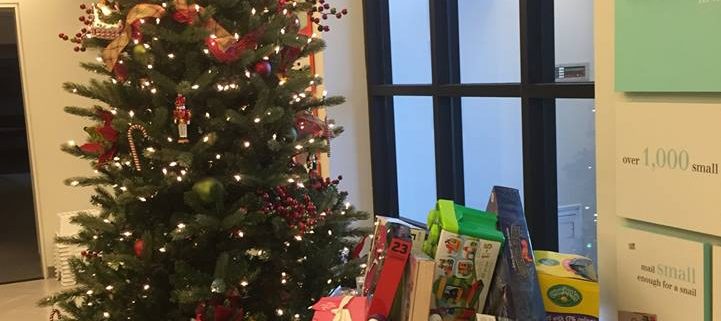Museum Product Photography With an iPhone: The MSA Photo Challenge
July 8, 2019
By David Graveen and Erin Brown
We all know that smartphone photography is key to selling products in this digital age. At MSA FORWARD in San Diego, I led a “hands-on” education session on product photography with an iPhone. I shared photo tips including how to build your own in-store photo studio for under $50 to ensure that your product photos come out perfectly. The second part of the session was led by social media expert Erin Brown, and she concentrated on using Instagram to build a following to help store sales. Our idea was that everyone in the session should leave “photo and Instagram ready.” Erin and I challenged session attendees with five goals to implement on their return to their respective museum stores. This challenge is now being extended to the entire MSA Community!

Photo taken with an iPhone X
The MSA Photo Challenge
Goal 1: Build a photo studio or buy an LED studio photo box (theflashery.com/lightbox). Define and plan the photo studio’s role in your store’s busy, everyday social media workflow.
Goal 2: Learn all camera settings/capabilities on your phone and use them for best results.
Phone Model iPhone X*
*Not all camera phones can deliver professional results. I recommend Apple’s iPhone 8 Version or higher.
Recommended Camera settings:
Color: Original
Display & Brightness – Set at mid-point
Storage – 64 GB Minimum, 256 GB Recommended ($1,150)
iCloud 2 TB ($10/month)
Flash: Off
HDR: Off
Live: Off
Grid: On
Zoom: Off
In the Photos App, create “Product Photography” Album
Goal 3: Learn all image editing tools on Instagram and use them for best results: filters, perspective, brightness, contrast, warmth, saturation, highlights, shadows, tilt shift, sharpen and vignette.
Note for advanced users: Instagram is a great app, but when it comes to making your photos stand out, dedicated photo editing apps usually surpass Instagram’s capabilities. Snapseed, A Color Story, VSCO, Adobe Photoshop Express and Pixlr are great picture editing apps. Beyond image editing, these apps offer time-saving actions like saving “image recipes” if you have a set of adjustments you like to apply to all your pictures. While most of the tools are available for free, some apps may lock these features behind a pay wall.
Goal 4: Make a professional product photo in 10 minutes or less.
Goal 5: Create an effective Instagram post in 10 minutes or less.
The DIY Basic Studio LED Studio Photo Box

My office is roughly 12’x15’ and packed with a desk, two large dog crates, bookshelves, filing cabinets and a conference table — and still I have space for both of these photo studio options. Look for a permanent studio location so that your setup time is minimized.
Here’s what you’ll need to build your own basic studio:
(2) Pieces of 24”x36” White Foam Core (Michael’s Art Supplies)
(2) Pieces of 18”x24” White Foam Core (Michael’s Art Supplies)
(2) Goose Neck Table Lamps (Staples)
(2) 65 Watt Daylight LED Light Bulbs (Staples)
(1) 2” White Gaffers Tape (Art supply Store)
(1) Dust Off Air in a Can (Staples)
DIY Budget: $50.00
LED Budget: $69.95

Escama Bag Corey Wood’s Sunglasses
These photos were made in less than 10 minutes using my iPhone X (image adjusted in Instagram) and shot using the DIY basic studio. I prefer the basic studio over the LED studio lightbox because it is larger and more forgiving, but the “seamless” background effect is easier to achieve with the lightbox. Both are super simple to use and can deliver great results!
I also used and recommend the following studio accessories:
- Floor Standing Tripod * Manfrotto’s “Compact Smart Model” $59 B&H Photo
- Shutter Release Blue Tooth * Camkix Wireless Blue Tooth $29 B&H Photo
- Acrylic Cubes in Various Sizes * Clear Solutions
Tip: A tripod will discipline your eye and improve your compositions, and, when combined with a Bluetooth shutter release, it will ensure that there is no camera shake and your image will be remarkably sharper.
Why white?
These two studio images were made with a white backdrop to highlight the product. Social media influencers in the nonprofit retail industry have established and embraced a white style for their social media — check out MoMA and the Art Institute of Chicago’s white style on Instagram. A white background is best practice. White encourages consistency. White is the Amazon standard, and white will save money in product photography time and resources. You may wish to develop a style and a vison to personalize your feed that does not include a white background, but an exercise with white is invaluable when learning the fundamentals of lighting.
You have your photos … now what?
- Label your photo files and file folders clearly and consistently.
- Save them in one accessible location (Dropbox or Google Drive if you can).
- Plan your social media one month at a time in an editorial calendar.
- Write and double check your captions.
- Tag vendors, your museum and other relevant accounts in the post.
- Engage with your audience.
- Be strategic. Create recurring content threads for your account.
What are content threads?
By thinking strategically and planning ahead about what makes your institution and store unique, it will be easier to generate new content. Examples: #MakerMonday, Item of the Week!, Meet the Staff. Add threads to your editorial calendar, leaving space for impromptu posts. Think about promoting products, educating followers on designers and artists, engaging with your community and staying entertaining.
Image Specs for Social Media
Each social media platform has different image sizes for their posts, profile pictures, etc. Ensuring that your images are sized appropriately will increase their quality in your followers’ feeds.
Instagram posts can be 1080 x 1080 pixels.
Facebook posts should have an image attached, 440 x 220 pixel (minimum, 2:1 ratio), or the photo won’t fill the feed appropriately.
Don’t forget to standardize your profile pics across platforms checking to be sure they’re the proper size.
Dos and Don’ts of Social Media
Do…
Find or create graphic, clear images.
Keep things vertical. Long images take up more space
Be thoughtful, but don’t belabor it.
Tag your vendors.
Post regularly (at least three times per week).
Keep your captions concise, but don’t forget to infuse personality.
Ask questions, reply to commenters and make it feel human.
Don’t…
Post blurry, low-resolution images ever.
Use someone else’s image without permission or recognition.
Over post (more than three times a day).
Post millions of unrelated hashtags.
Spend hours agonizing over a single post.
Forget to create a geotag location and tag your posts.
Grow your Following
Use the right hashtags.
Use the right filters.
Post at the right time.
Pay for sponsored posts and product reviews.
Use geotags to boost local discovery.
Organize your Stories into Highlights on your profile.
Ask new users who engage with you to follow you.
Be consistent.
Hop on trends.
Run a giveaway.
Monitor your following closely over time.
Use the Instagram tools at your disposal.
Win $500!
Now take what you’ve learned and enter the Museum Store Product Photography Contest!
Instagram Post: Museum Store Sunday
Deadline: Oct. 1, 2019
Photograph and create a Museum Store Sunday Instagram post. Posts need to be completed and shared with Erin Brown, “the judge.” Erin will choose the most effective Museum Store Sunday Instagram post. The Best Museum Store Sunday post will receive a $500 credit toward any custom product from Popcorn. Hint: Make sure you use the hashtag #museumstoresunday
Engage your staff and have fun!
 David Graveen is the managing partner of Popcorn, a specialty design and manufacturing company dedicated to the nonprofit and specialty retail marketplaces. In the past year, Popcorn partnered with fellow MSA vendor Original Source to form the “Single Source” Brand, delivering an unprecedented range of services, products and best pricing to the museum store community. Over the past 17 years, David “Popcorn” has served on the MSA Board of Directors as a Vendor Advisor, he has championed LARGE group photos at chapter meetings and led several education sessions at the annual conference. David has served on the Museum Store Sunday Committee from its inception and is proud to be a founding sponsor.
David Graveen is the managing partner of Popcorn, a specialty design and manufacturing company dedicated to the nonprofit and specialty retail marketplaces. In the past year, Popcorn partnered with fellow MSA vendor Original Source to form the “Single Source” Brand, delivering an unprecedented range of services, products and best pricing to the museum store community. Over the past 17 years, David “Popcorn” has served on the MSA Board of Directors as a Vendor Advisor, he has championed LARGE group photos at chapter meetings and led several education sessions at the annual conference. David has served on the Museum Store Sunday Committee from its inception and is proud to be a founding sponsor.
Erin Brown is a social media consultant and part of the Hello PR Team responsible for Museum Store Sunday press and social. She studied Art History in college and began her career in the marketing department of a museum in Los Angeles. From there, she lived in San Francisco and New York, working as the director of marketing and communications for Design Within Reach, where she brought the stories of emerging and established designers and their products to life through print and online media. In 2014, Erin returned to the LA area to live and work, starting a social media consultancy for retail brands, designers and more.

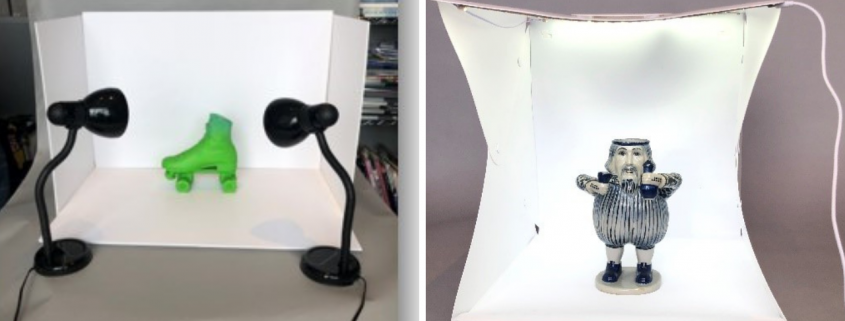

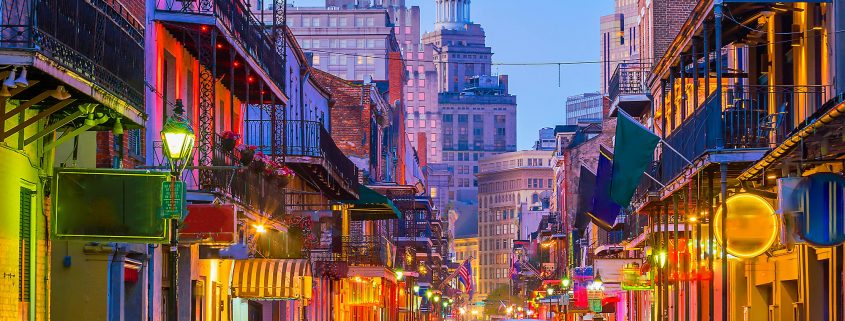


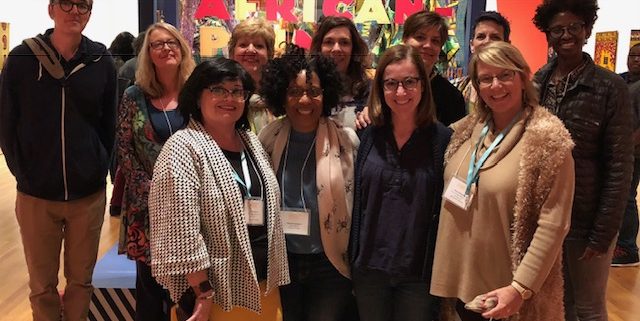


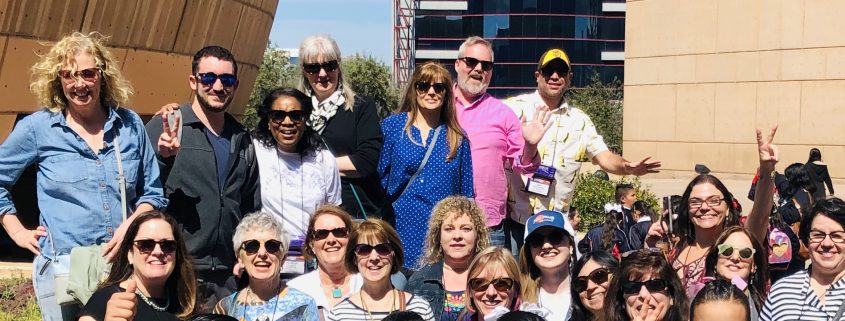


 Having worked at The Deep since its build, I recall being determined that as many people as possible would enjoy the aquarium and providing inclusive tourism for all is key to this aspiration. Having managed the customer service that has delivered over 7.5 million visits since 2002, I see these not as casual days out, but rather the potential to inspire, inform, educate and entertain to as wide an audience as possible. The availability of accessible leisure and tourism opportunities should be the norm rather than the exception.
Having worked at The Deep since its build, I recall being determined that as many people as possible would enjoy the aquarium and providing inclusive tourism for all is key to this aspiration. Having managed the customer service that has delivered over 7.5 million visits since 2002, I see these not as casual days out, but rather the potential to inspire, inform, educate and entertain to as wide an audience as possible. The availability of accessible leisure and tourism opportunities should be the norm rather than the exception. Louise Kirby, MSc, is the director of operations and people at The Deep aquarium in Hull, England. The Deep opened in 2002, by which time Louise had already joined the organization as the personal assistant to the chief executive, bringing with her substantial experience in office and business management. As so often happens with PAs, Louise’s remit evolved over time and she grew from being responsible for recruitment paperwork, through to achieving a master’s degree in human resource management and from taking minutes at board meetings to becoming a core member of the senior management team. Louise now holds responsibility for all aspects of the company’s HR activities, as well as the commercial elements of the business, with the managers of retail, food and beverage, guiding and ticketing reporting to her. As a champion of service excellence, people development and accessible tourism, Louise delights in supporting people’s aspirations and achievements in her home city as well as within the attraction industry worldwide.
Louise Kirby, MSc, is the director of operations and people at The Deep aquarium in Hull, England. The Deep opened in 2002, by which time Louise had already joined the organization as the personal assistant to the chief executive, bringing with her substantial experience in office and business management. As so often happens with PAs, Louise’s remit evolved over time and she grew from being responsible for recruitment paperwork, through to achieving a master’s degree in human resource management and from taking minutes at board meetings to becoming a core member of the senior management team. Louise now holds responsibility for all aspects of the company’s HR activities, as well as the commercial elements of the business, with the managers of retail, food and beverage, guiding and ticketing reporting to her. As a champion of service excellence, people development and accessible tourism, Louise delights in supporting people’s aspirations and achievements in her home city as well as within the attraction industry worldwide. 


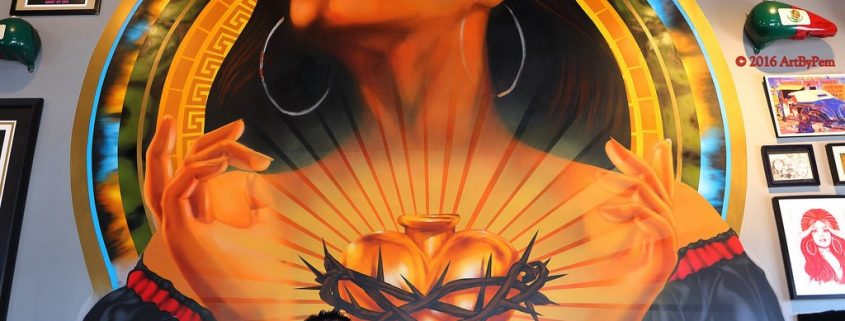


 find other good eats a short walk across the Cabrillo Bridge. For a high-end experience, visit Mister A’s where the meal (and prices) match the glorious view. Kitty corner to Mister A’s, on Fifth and Laurel, is CUCINA urbana where you will have a wonderful Italian meal. For great ramen, it’s Hachi Ramen. (It’s my lunchtime go-to. I always order the Tan Tan ramen). Hachi is on the same block as Mister A’s and CUCINA urbana.
find other good eats a short walk across the Cabrillo Bridge. For a high-end experience, visit Mister A’s where the meal (and prices) match the glorious view. Kitty corner to Mister A’s, on Fifth and Laurel, is CUCINA urbana where you will have a wonderful Italian meal. For great ramen, it’s Hachi Ramen. (It’s my lunchtime go-to. I always order the Tan Tan ramen). Hachi is on the same block as Mister A’s and CUCINA urbana.
 Polite Provisions, a cocktail bar where you will be taken back in time to the era of the sophisticated cocktail. Finish off your evening at An’s Dry Cleaning, a Zagat-rated homemade small batch gelato shop housed in a former dry cleaning shop (open until 11 p.m.). If you don’t have a sweet tooth, then head a block or two south on 30th Street from Jaynes and visit Fall, another of the many great local breweries. Be sure to check out the bathrooms, which are decorated with hundreds of old punk rock flyers from the early ’80s. They’ll usually have a food truck out front to help with hunger. Oh, and the beer is pretty good too. Be sure to tell Dave that Chacho sent you! All the places listed in Normal Heights are within a three-block walk, so Lyft there and then let your feet guide the way.
Polite Provisions, a cocktail bar where you will be taken back in time to the era of the sophisticated cocktail. Finish off your evening at An’s Dry Cleaning, a Zagat-rated homemade small batch gelato shop housed in a former dry cleaning shop (open until 11 p.m.). If you don’t have a sweet tooth, then head a block or two south on 30th Street from Jaynes and visit Fall, another of the many great local breweries. Be sure to check out the bathrooms, which are decorated with hundreds of old punk rock flyers from the early ’80s. They’ll usually have a food truck out front to help with hunger. Oh, and the beer is pretty good too. Be sure to tell Dave that Chacho sent you! All the places listed in Normal Heights are within a three-block walk, so Lyft there and then let your feet guide the way. Heading south, 30th Street bisects El Cajon Boulevard and University Avenue. The 30th Street corridor has become a dining and shopping destination. This area is known as North Park. As you travel south down 30th, you’ll eventually get to South Park. Both North Park and South Park are very vibrant and old neighborhoods. The old North Park Theater (now known as “The Observatory North Park”) first opened in 1929 and is now a concert venue with musical acts to fit most any taste. If you decide to see a show at The Observatory, enjoy a pre-concert dinner at Saiko Sushi across the street. Their unusual rolls have delighted diners like me since they opened in North Park in 2014. Of course, it’s San Diego, so there are tacos. Among the best taco places in that neighborhood is City Tacos. As you make your way around North Park, there are several eateries, shops and bars. Of note for food are The Smoking Goat, One Door North and Underbelly. For drinks, try Modern Times Beer, Live Wire (a
Heading south, 30th Street bisects El Cajon Boulevard and University Avenue. The 30th Street corridor has become a dining and shopping destination. This area is known as North Park. As you travel south down 30th, you’ll eventually get to South Park. Both North Park and South Park are very vibrant and old neighborhoods. The old North Park Theater (now known as “The Observatory North Park”) first opened in 1929 and is now a concert venue with musical acts to fit most any taste. If you decide to see a show at The Observatory, enjoy a pre-concert dinner at Saiko Sushi across the street. Their unusual rolls have delighted diners like me since they opened in North Park in 2014. Of course, it’s San Diego, so there are tacos. Among the best taco places in that neighborhood is City Tacos. As you make your way around North Park, there are several eateries, shops and bars. Of note for food are The Smoking Goat, One Door North and Underbelly. For drinks, try Modern Times Beer, Live Wire (a  true dive bar with a great jukebox) and Bar Pink. Visit Tiger!Tiger! on El Cajon Boulevard for wood-fired oven-roasted sandwiches. Tiger!Tiger! is really, really good — so good, in fact, that I understand a certain MSA chapter will be hosting its chapter dinner there! For the vegetarian and vegan foodies, South Park’s Kindred is a must. It’s a heavy metal vegan must-do. Great cocktails, hardcore décor and delicious food — all really good and vegetarian. Across the street is Buona Forchetta, which has absolutely amazing Italian fare. A wood-fired homemade pizza oven creates among the best pizzas in town. Make a reservation to sit on the front patio. For shopping, try Pigment for gifts, The Book Catapult for books and gifts, Artelexia for unique Mexican crafts and decor, and Simply Local, which has seemingly endless options for handmade and local products, all from local artisans.
true dive bar with a great jukebox) and Bar Pink. Visit Tiger!Tiger! on El Cajon Boulevard for wood-fired oven-roasted sandwiches. Tiger!Tiger! is really, really good — so good, in fact, that I understand a certain MSA chapter will be hosting its chapter dinner there! For the vegetarian and vegan foodies, South Park’s Kindred is a must. It’s a heavy metal vegan must-do. Great cocktails, hardcore décor and delicious food — all really good and vegetarian. Across the street is Buona Forchetta, which has absolutely amazing Italian fare. A wood-fired homemade pizza oven creates among the best pizzas in town. Make a reservation to sit on the front patio. For shopping, try Pigment for gifts, The Book Catapult for books and gifts, Artelexia for unique Mexican crafts and decor, and Simply Local, which has seemingly endless options for handmade and local products, all from local artisans. I can’t possibly include everything that makes me happy about San Diego. It’s a great town to explore. I didn’t even mention Cabrillo National Monument and its tide pools located in Point Loma. On the other side of Point Loma is Liberty Station where the Mingei International Museum has its temporary store while their huge museum remodeling project takes place in Balboa Park. Visit the Mingei store, then head to the exceptional Liberty Station food court. Maybe even pay a visit to Fathom
I can’t possibly include everything that makes me happy about San Diego. It’s a great town to explore. I didn’t even mention Cabrillo National Monument and its tide pools located in Point Loma. On the other side of Point Loma is Liberty Station where the Mingei International Museum has its temporary store while their huge museum remodeling project takes place in Balboa Park. Visit the Mingei store, then head to the exceptional Liberty Station food court. Maybe even pay a visit to Fathom  Bistro, Bait, and Tackle on a pier off of Shelter Island. It’s a fishing pier, so they do sell bait and tackle, but their specialty is their homemade (yup, made on the pier) artisanal sausages and rare beers. Sit on the pier, sip a beer with a nibble and enjoy an incredibly beautiful view across the bay toward downtown San Diego. And if you want authentic tiki, there is the Bali Hai Restaurant, which is also on Shelter Island. There’s so much, and I didn’t even mention hikes in Torrey Pines State Reserve, walks on the beach in Coronado and the Hotel Del Coronado, San Diego’s Old Town — a cultural center with many great places to visit, and Mission Basilica San Diego de Alcala in Mission Valley, which was founded 250 years ago this year. So, now that you’ve read through this entire post, your job is to — in between meetings, roundtable discussions, seminars and shopping — get out and explore all that this great city has to offer. See you soon!
Bistro, Bait, and Tackle on a pier off of Shelter Island. It’s a fishing pier, so they do sell bait and tackle, but their specialty is their homemade (yup, made on the pier) artisanal sausages and rare beers. Sit on the pier, sip a beer with a nibble and enjoy an incredibly beautiful view across the bay toward downtown San Diego. And if you want authentic tiki, there is the Bali Hai Restaurant, which is also on Shelter Island. There’s so much, and I didn’t even mention hikes in Torrey Pines State Reserve, walks on the beach in Coronado and the Hotel Del Coronado, San Diego’s Old Town — a cultural center with many great places to visit, and Mission Basilica San Diego de Alcala in Mission Valley, which was founded 250 years ago this year. So, now that you’ve read through this entire post, your job is to — in between meetings, roundtable discussions, seminars and shopping — get out and explore all that this great city has to offer. See you soon!

 Chacho Herman is a native San Diegan and associate director of earned income at the San Diego Museum of Art. Herman has over 30 years of cultural commerce experience. When not working, he and his wife can be found playing fetch on Coronado Beach with his dog, BB, or exploring the deserts and beaches of Baja.
Chacho Herman is a native San Diegan and associate director of earned income at the San Diego Museum of Art. Herman has over 30 years of cultural commerce experience. When not working, he and his wife can be found playing fetch on Coronado Beach with his dog, BB, or exploring the deserts and beaches of Baja. 

 Julie Steiner is the director of retail operations for the Barnes Foundation in Philadelphia and was the 2017-18 president of MSA.
Julie Steiner is the director of retail operations for the Barnes Foundation in Philadelphia and was the 2017-18 president of MSA.
 The offer was a collaboration between MSA and The Regional Government of Castilla-La Mancha and its Institute of Foreign Trade (IPEX). As in past years, their goal was to connect their regional artists to museum store buyers — an opportunity for them to learn about our needs as buyers and for us to meet their artists in person to forge a connection.
The offer was a collaboration between MSA and The Regional Government of Castilla-La Mancha and its Institute of Foreign Trade (IPEX). As in past years, their goal was to connect their regional artists to museum store buyers — an opportunity for them to learn about our needs as buyers and for us to meet their artists in person to forge a connection.

 Pam Pesetti is museum store manager at the Crocker Art Museum in Sacramento, California. She has been an MSA member for three and a half years and currently is secretary of the MSA Western Chapter.
Pam Pesetti is museum store manager at the Crocker Art Museum in Sacramento, California. She has been an MSA member for three and a half years and currently is secretary of the MSA Western Chapter.